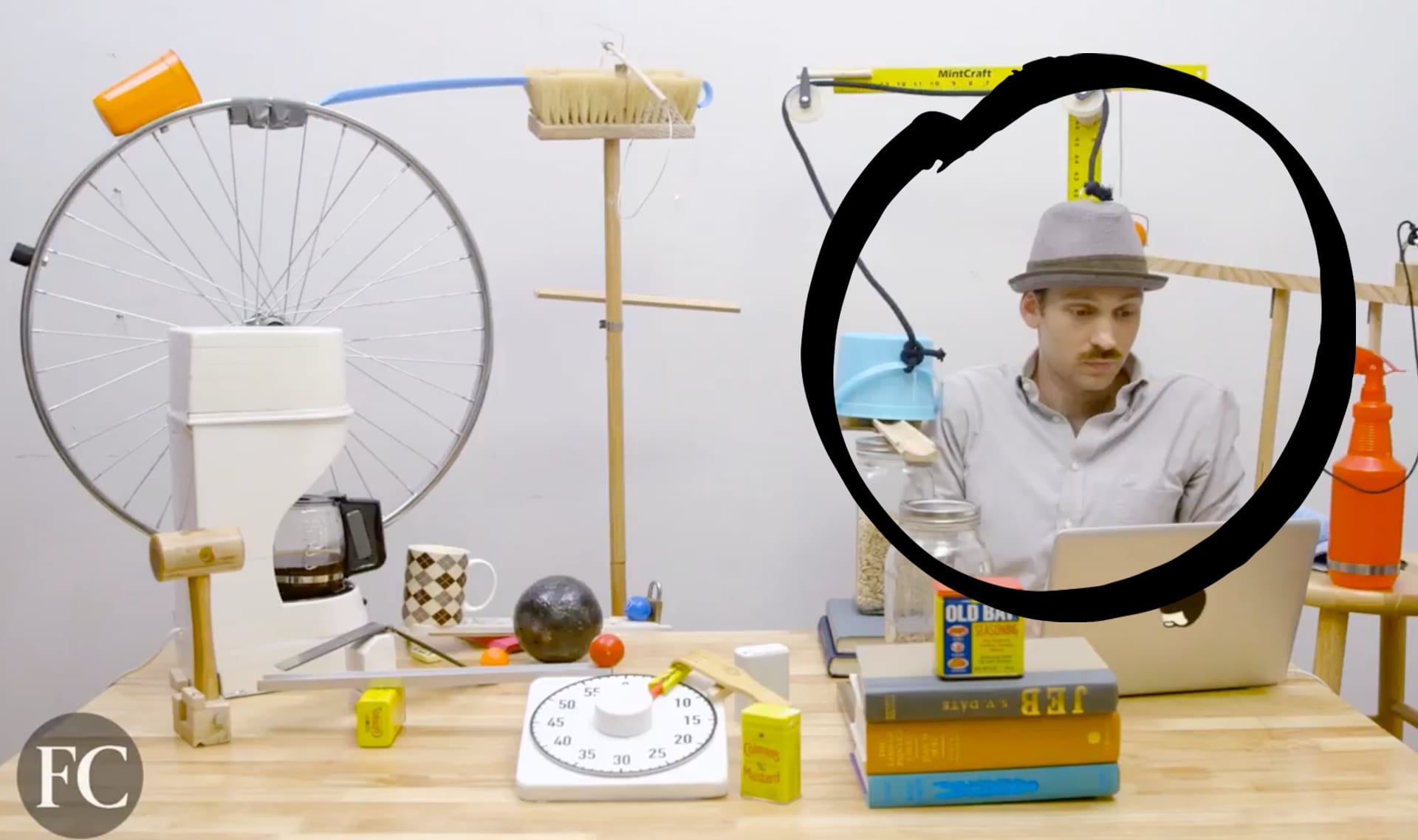
¿Podrías derribar un edificio usando solamente fichas de dominó?

CONVERSEMOS:
Cuando acomodas una ficha de dominó, pones parte de cada dominó arriba. ¿Se te ocurre otra situación en la que poner algo "más arriba" hace que algo especial suceda?
Pista…
Piensa en cosas que viste en las lecciones anteriores.

CONVERSEMOS (1 de 2):
¿Acaso una ficha de dominó puede derribar una que es un poco más grande?
Haz la prueba tú mismo si puedes. Puedes usar libros si no tienes fichas de dominó. O ve a la siguiente página para ver un video en el que nosotros lo intentamos.
ESTO FUE LO QUE SUCEDIÓ:
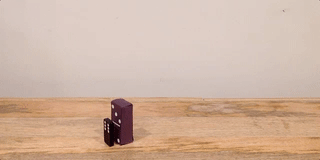
¡Sí funcionó! Una ficha de dominó tiene la suficiente energía para derribar a una que es un poco más grande. Ahora ve a la siguiente página.
CONVERSEMOS (2 de 2):
Desafío: ¿Crees que sería posible derribar algo MUY grande (por ejemplo, una ficha de dominó del tamaño de un edificio) usando solo fichas de dominó pequeñas?
Haz un dibujo de tu idea.

CONVERSEMOS:
En términos de energía, ¿por qué es posible usar algo del tamaño de un ladrillo para derribar algo del tamaño de una casa pequeña?
¿Lo puedes explicar? Si quieres, puedes hacer un dibujo.
Piensa en esto: ¿En dónde está la energía almacenada? ¿De dónde viene la energía almacenada?

CONVERSEMOS:
¿Por qué crees que los científicos y las científicas dicen que la caída de muchas fichas de dominó es una reacción en cadena?



01/18

02/18
líneas negras gruesas.

03/18
para remarcar cada cada pliegue.

04/18

05/18
cortes pequeños para recortar el triángulo.

06/18
de esta manera y la solapa más grande hacia arriba y hacia adentro.
Después, ponle un clip.
Si hay un compañero o una compañera cerca de ti, ustedes se pueden ayudar entre sí para hacer los siguientes pasos. Pero si estás trabajando solo o sola, no te preocupes.
Hemos incluido pasos especiales para ti. Si el paso dice que necesitas la ayuda de un compañero o compañera, ve al siguiente paso para ver cómo lo puedes hacer sola o solo.

07/18
los siguientes pasos.

08/18
cuidado y ponle una calcomanía.

08b/18
plataforma inclinada sobre la rampa, así. Deténla con una mano
y usa la otra mano para pegar la calcomanía.

09/18
rampa. Haz que tu compañera o compañero le ponga
calcomanías para pegar la solapa al vaso.

09b/18
la rampa. Pon la calcomanía en la solapa, así. Inclina la rampa
contra el vaso y pega la calcomanía al vaso.

10/18
del plumón, así.

11/18
arriba para que la canica pueda rodar sobre ella.

12/18
suficiente como para levantar la plataforma inclinada?

13/18
que pueda golpear la plataforma inclinada?

14/18

15/18
solución que funcione para ti.

16/18
dentro del vaso.

17/18
para inclinar la plataforma y hacer rodar la canica.

18/18

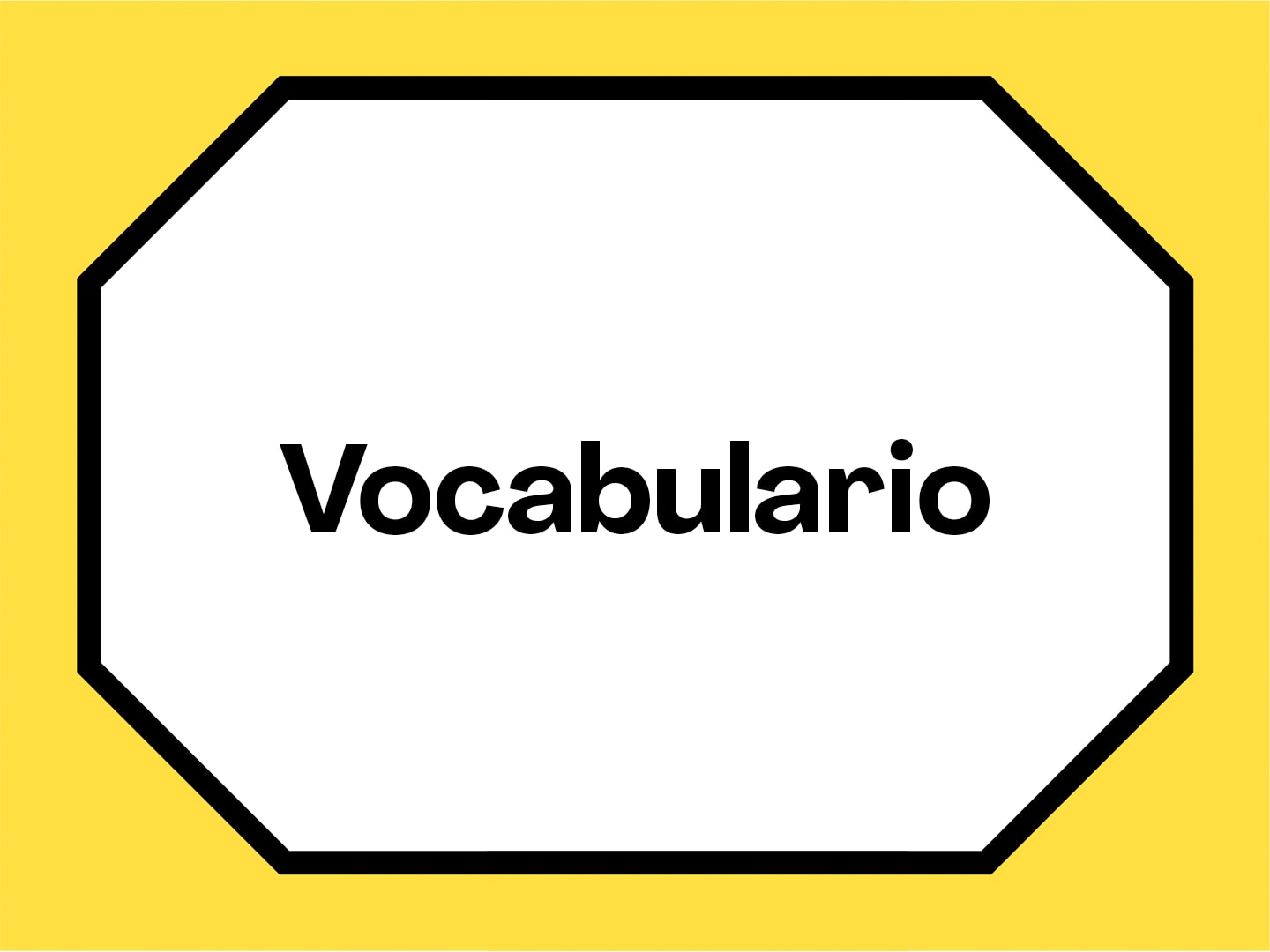

energía
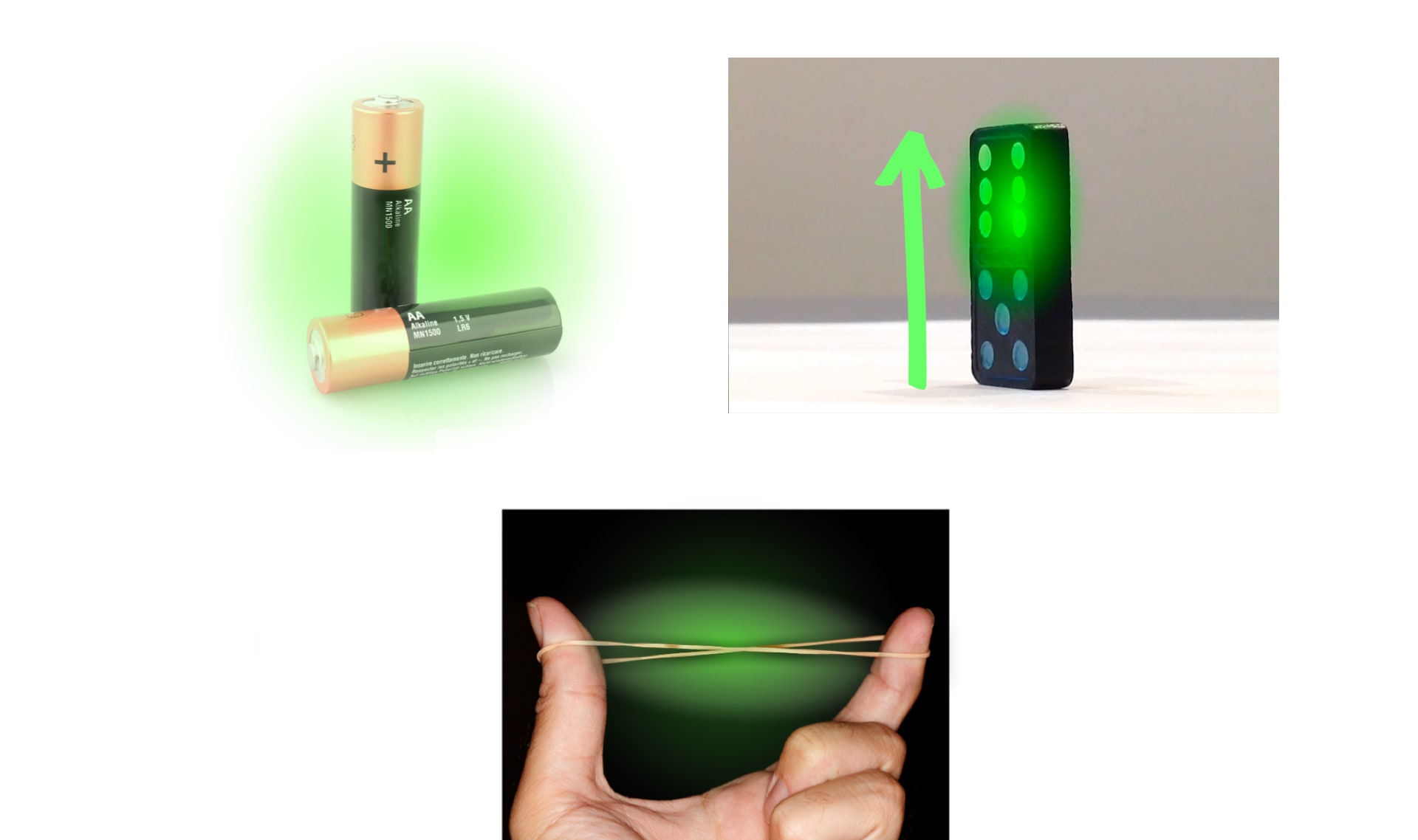
energía almacenada

máquina de reacción en cadena

transferencia de energía

palanca
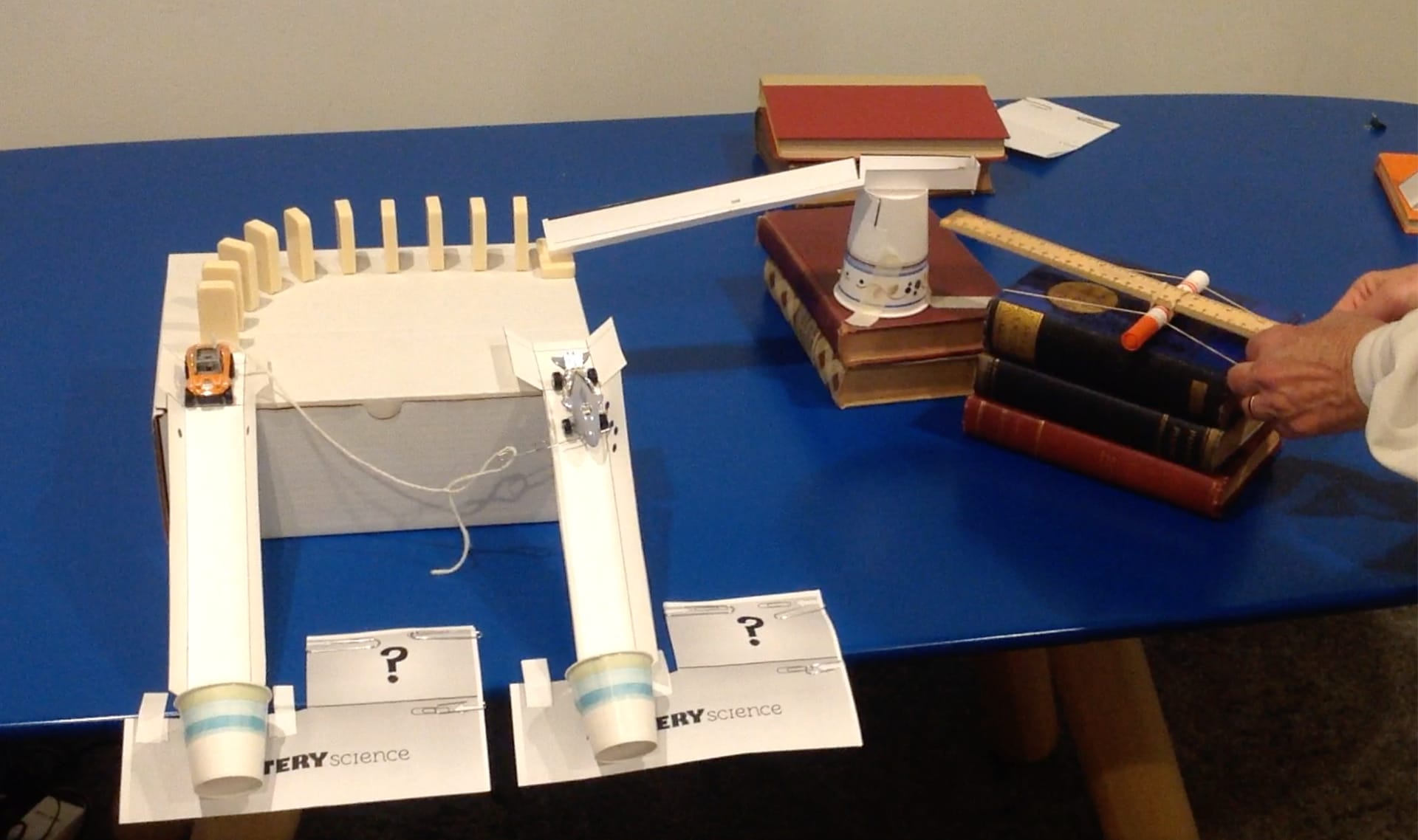
experimento
